- Home
- John Berger
Titian
Titian Read online
Contents
Preface
Letters
A Note on the Authors
Also by John Berger
Also Available by John Berger
Preface
I
The first regular money I earned – I was a painter at the time – was working for the Worker’s Education Association in London. Three evenings a week I would take the tube to Edgware and talk with London Transport bus drivers and conductors about art. I was younger than any of them and had (for the epoch) outrageously long hair.
Some of the bus people painted as a hobby and would show me their work; others, for different reasons, were curious about how paintings are made and why. I think they put up with me because I seemed to them improbable. At the same time, they didn’t disbelieve me. And so they accepted me as a kind of expert of the unexpected.
‘You gave us a surprise last week,’ they’d say. ‘What have you got up your sleeve tonight?’ I brought books with me and, drinking cups of tea and eating the cakes which one of the conductresses had baked, we turned the pages …
I received more from them than they did from me. I began to learn something about the space in their lives – and for each one it was slightly different – which they hoped their experience of art might fill. I began to see dimly how life can welcome art.
Years passed, and I became a writer. Some of the books I wrote were about painting and artists. My work owed a lot to certain philosophers and art historians – to Wölfflin, Antal, Max Raphael, Klingender, Ortega y Gasset, Hauser, Berenson, Friedländer, Walter Benjamin, and others. Yet I’m no art historian. I am too impatient, and I live too much in the present.
When I want to get closer to works from the past, I do drawings from them. (As I have done drawings from Titian’s paintings.) This is, however, a gestural approach, not an historical one. In drawing, you try to touch, if only for an instant – like playing tag – the master’s vision.
What still intrigues me most is the question I first faced during those evenings in Edgware. How does a work of art, once created, re-enter life? Promising what?
About this there are still stories to be told and, as with any story, they have to be followed rather than invented.
Katya, my daughter, grew up surrounded by a lot of art books. Later she travelled and would visit museums and send me postcards. We didn’t talk much about painting – far more about places, films, animals, language. When she sent me the first card from Venice, I replied hoping that she would reply. She did, and this story began.
John Berger
PS Katya’s letters were written in French, which is her first language; mine were in English. Much later, Katya translated my letters into French, and I did the same with hers into English. We have used my English translations for this book.
II
As long as I can remember, I have been used to looking at paintings. Without any fuss, a monograph on Caravaggio or the catalogue of a Poussin exhibition was dumped on my knees, and I was left alone to turn the pages. By a flaring paraffin lamp – this was in a decrepit, out-of-the-way farmhouse in Provence where I spent the most luminous moments of my childhood – I started, as I looked at these books, to dream – a bit like one of those figures in a Chagall painting crossing the sky above the roofs of churches.
Stories were prompted by the contours of an angel playing a musical instrument. Others came panting from the clenched bodies of The Rape of the Sabines. Soon yet others were being whispered from between fruits in a still-life, from the borders of a colour, from the scratches of a texture.
Several years later – this was when I was earning my first wages working evenings at a McDonald’s – I realised how there’s no communication more total than that between an object (preferably a work of art) and the one watching it. That painting over there, that story, that melody, but also that hairstyle or that expression – each took me by the hand and led me into its forest. Many things stayed hidden, others spoke to all my senses. It was as if my own gaze took on flesh from contact with the thing seen and then blew on it with warm breath which was almost visible, as when one breathes into frozen air.
At about the same time, I came to understand that I was never more alive than when I was able to give myself, even if only partially, to such an exchange. The capacity to join myself to what I was looking at – and particularly if it was something which had been created – offered me nothing less than immortality – for I left in this thing, destined to outlive me, some scrap of what I had lived.
A river painted by Courbet, containing something of my own experience of water flowing, of wetness, of the visible, was more intensely and permanently alive than I could ever be. And, what is more, it conferred upon me a little of its own immortality. It went beyond me and tugged me into the universal. A prelude by Bach, taking the same path as one of my dreams, but surpassing it in solidity and precision, would then miraculously lend my dream, retrospectively, its own grace.
At this age, too, I came upon my dearest wish: The best thing that might happen, I decided, would be to become entirely a painting, a novel, a quartet. Not as a protagonist, whose own life was built into art, but in a more diffused way, to become the under-canvas for a portrait of a gentleman, to become the recurring rhyme of a poem, or to become a description of people dancing at a ball. Thus I would breathe onto such creations and be materialised in them for ever.
At first, I invented a god who lived in the sky, surrounded by a committee of those who were timeless and who looked through a telescope to direct the story of my life! Later, my narcissism pared away by the years, I found enough comfort in the idea that with or without a telescope focused on me, a simple movement of a human face (mine or somebody else’s) could be the equivalent of a work of art, and that it was the quality of seeing – and, equally, the power of the invitation to look – which offered that feeling of cosmic harmony which I had discovered when a painting welcomed me into its forest.
I started to hunt everywhere for promises of this magic, a magic which is both permanent and ephemeral, inimitable and universal. And so it was that I was led, with the passage of time, to become a film critic, still searching for this sudden solidity and swift incarnation which we call meaning.
The Rape of the Sabines, which I had goggled at long ago by the flaring paraffin lamp and which, for a fraction of a second, surrounded the whole world with its frame, had little by little shown me how art with its miraculous eye – an eye which both fixes and liberates – can seize the essential.
When in 1990 I went to the Titian exhibition in Venice, I saw the old painter coming towards me, and I saw myself spread out in paint on a scrap of canvas. This is what made me want to start a dialogue with John: he who had hinted to me how life welcomes art, he who knew, as well as I do, that everything still escapes us.
Katya Berger Andreadakis
‘That’s purity,’ he said,
‘It is the same on the slopes as in your entrails.’
And he spread his hands as would
an old experienced God creating clay
and heavenliness together.
Odysseus Elytis
Letters
PIAZZA SAN MARCO, VENICE
John,
What do I think about Titian? In one word on a postcard: flesh.
Love, Katya
AMSTERDAM
Kut,
All right, flesh. First, I see his own, when he’s old. Why do I immediately think of Titian as an old man? Out of solidarity – given my own age? No, I don’t think so. It’s to do with our century and the bitterness of its experience. It’s always searching for rage and wisdom rather than harmony. Late Rembrandts, late Goyas, Beethoven’s last sonatas and quartets, late Titians … Imagine the élan of a century whose old master
was the young Raphael!
I think of the self-portraits painted when he was in his sixties or seventies. Or himself as the penitent Saint Jerome, painted when he was in his eighties. (Perhaps it’s not a self-portrait; it’s only my guess, but I feel he was thinking intensely about himself when he was painting it.)
What do I find? A man who is physically imposing and has considerable authority. You can’t take liberties with him. With the late, decrepit Rembrandt it would have been easy. This one knows how power works, and he has exercised his own. He has turned the trade of being a painter into a profession – like that of a General or an Ambassador or a Banker. He’s the first to do this. And he has the confidence that goes with it.
And also a painterly confidence. In his late works, he is the first European painter to display – rather than hide or disguise – his manual gestures when putting the pigment onto the canvas. Thus he makes painting physically confident in a new way – the act of the painting hand and arm becomes expressive in itself. Other artists like Rembrandt or van Gogh or Willem de Kooning will follow his example. At the same time, his originality and boldness were never foolhardy. His attitude to everything in Venice was realistic.
And yet, yet… the more I look at the way he painted himself, the more I see a frightened man. I don’t mean a coward. He doesn’t take risks, but he has courage. He does not normally show his fear. But his brush can’t help but touch it. It’s most evident in his hands. The’re nervous like the hands of a money-lender. Yet his fears could not, I think, have been concerned with money.
A fear of death? The Plague was rampant in Venice. A fear leading to penitence? A fear of judgement? It may have been any of these, but they are too general to help us understand him or to get closer to him. He lives to be a very old man. The fear lasts a long time. And long-drawn-out fear becomes doubt.
What provoked this doubt in him? I suspect it was intimately connected with Venice, with the city’s special kind of wealth and commerce and power. All of which, as you say, had to do with the flesh.
Love, John
GIUDECCA, VENICE
John,
Several times whilst I was wandering through the exhibition, I crossed paths with, was followed by, lost sight of, and then again found myself beside, an old man. He was alone and muttering to himself.
The first time I saw him, he was coming back from one of the last rooms and very decidedly making for the painting Christ Carrying the Cross. And there at my side he stopped.
‘One uses painting’, he suddenly said, ‘to clothe oneself, to keep warm …’
At first, I felt put out and scowled at him, but he went on, as if nothing had happened.
‘Jesus carries his cross and, me, I carry the art of painting, I wear it like something woollen.’
He had won me over.
Now he was making for the Rest on the Flight into Egypt. In some way, I must have annoyed him, for he appeared to be angry, spitting out disconnected words.
‘The fur, ough! The fur of my painting… stuff, stuff …’
By The Portrait of a Man, he spoke directly to the sitter, poking his nose towards the painted nose.
‘First I painted you all dressed up, then I did a whole painting of an animal’s skin!’
He didn’t need to turn round to know that I was following him, and as we passed a group of visitors who were listening to their guide, he said to me out of the corner of his mouth, as if it were a joke, ‘Dogs, rabbits, sheep, they all have their fur to keep them warm and, me, I want to imitate them with my brushes!’
When he next spoke, not without a little pride, I wasn’t sure whether he was referring to the portrait of a Cardinal or to the Portrait of a Man.
‘Nobody else has painted men’s beards like that!’ he said. ‘They’re soft as monkey’s hair.’
I lost sight of him. A little later, the gallery’s alarm siren started up. Given that my friend (we had by now smiled at each other) obviously knew little about the rules and routines of modern art exhibitions, I immediately thought of him. No sooner had I done so, than I saw a uniformed official remonstrating with the old man and indicating the statutory distance which must be respected before each canvas. The old man was saying ‘You must surely see, velvet, you must see, velvet is my favourite material, and I can’t resist its touch!’
From that moment on, he decided to stay with me. He followed wherever I went. He continued his monologue, however, and didn’t attempt conversation.
Whilst I was looking at Danaë, he abruptly dragged me towards the Berlin Self-Portrait.
‘It’s a pity they didn’t hang them in the same room,’ he said. ‘The hair on the body, the hair of the head, feathers, nobody can get more naked than that… I wash and wash my colours until they look like the coat of an animal. By working on clothes you can make them look worn, silky, clinging, almost like flesh.’
After this, for him, long speech, he seemed a little discouraged. For half an hour he didn’t say a word. In front of Venus and Adonis, he simply verified that I was studying the picture correctly. For my part, I showed my admiration by opening my eyes and mouth wide.
He seemed almost to have finished.
Before the Flaying of Marsyas, there was another splutter of words: ‘When you skin an animal, you touch the truth about flesh.’
In front of the Pietà, he sat down. I think he sat there for a very long time. At first, I didn’t know whether to wait, to greet him, or, to tell him my own impressions. He made a sign for me to come closer. Certainly, he knew that his remarks about fur had impressed me, for instead of talking about the famous mysterious hand imploring the saint’s statue in the Pietà – the hand I was staring at fixedly – he went his own way and repeated ‘Hair is to the body what painting is to the world!’
Then, with a deep laugh, he added something which made me think of you: ‘You can burrow into it, you can look underneath it, you can lift it, or you can pull it – but don’t try to shave it – it’ll always grow again!’
Before turning away from him for good, I had a very clear image of my own body lying naked on a canvas in the exhibition: of moss underneath me, of a dog at my side, of my outlines scarcely separable from the surrounding landscape. A landscape which, later, Courbet might have walked over. With the grass, the clouds, and the soil, my flesh would then have been the earth’s coat.
Hugs, Katya
HAUTE SAVOIE
Kut,
All that you say about fur makes me think of his dogs. Was the old man by any chance accompanied by a dog?
I think he loved dogs. Perhaps they calmed or encouraged him. Were they witnesses? Witnesses he could trust. Dumb, dumb witnesses. Perhaps it sometimes happened that, whilst painting with his right hand, his left ferociously stroked one of his dogs. The fur as company for his fingers, and the dog shifting its weight as his arm moved!
At that time, it was something of a fashion to put dogs into paintings. One finds them in Rubens, Velasquez, Veronese, Cranach, van Dyck … amongst other things, they were a kind of go-between between men and women. Ambassadors of desire. They represented (according to their breed and size) both femininity and virility. They were almost human – or they shared the privacy of humans – and yet they were guileless. They were also randy. Randy, and nobody could raise their eyebrows – because, after all, they were dogs!
We see them in many of his paintings. In portraits of men and women and in mythological subjects. But nowhere more strangely than in the late picture A Boy with Dogs. There’s no other painting like it, and I tend to agree with the experts who mostly dismiss the idea that this is a detail taken from a larger canvas. What we see is more or less what the old man meant us to see. A boy – how old do you think he is? Three? Four at the most? – alone in a dark landscape with two dogs and two young pups (perhaps four weeks old?). The boy puts his arm round the white dog – who, I guess, is male – for reassurance. The mother, the bitch, is the only one looking at us, and the pups have nosed their w
ay through the fur to her teats.
Despite the dusk, the scene is calm, peaceful, comblé as the French would say. Nobody wants anything more.
The dogs are the boy’s family. I would even say parents. The boy’s legs and the two visible legs of the white dog are like four legs of the same table – practically interchangeable. Everyone is waiting – which is to say living.
Isn’t waiting the essential occupation of dogs? Learnt maybe because of their proximity to humans. Waiting for the next event or the next arrival. Here the last important event, it seems, was birth. Pups and boy born into this bitch of a life. Born to wait for death. Yet meanwhile there’s warmth, milk, the mysteries of the fur, and eyes which are speechless.
The old man, of course, wanted your sympathy. No, not sympathy, your interest. Because if you were interested, you would pose for him, and he wanted to paint you! Painting women, he forgot his doubt. But each time he forgot, he was adding to his worry. All the women he painted – from Adriane to the Repentant Magdalene – represented this worry, which wasn’t about women. Each one consoled and at the same time reinforced his worry.
The painting with the dogs is about the consolation. It’s a honeyed painting. It’s about bliss. The pups have discovered bliss in the fur – as Jove will never find it with Danaë or Danaë with Jove.
Meanwhile the other three (the boy and the two adult dogs) are waiting … And the two waiting dogs, watching, are the old man’s accomplices. They are the nearest he can find to what he has dreamt of painting and to what he paints with. They can bite and they are innocent.
I love you, John
ATHENS
John,
I try to find an answer to the question ‘What made him paint?’ And I can hear only one word, coming from all the chaos of physical matter, as if from the bottom of a black well.
Desire. His desire (as befits an eminently virile painter) was, if not to cut into appearances, at least to penetrate and lose himself in the skin of things. Yet, being human and being a painter, he came up against the impossibility of doing this: the heart of nature, the animal in humans, the world’s pelt can never be seized, and, above all, they are unrepeatable, unreproducible. And so, for a while, like many of his contemporaries, he used his skill to show that everything was vanity, vanitas vanitatis: beauty, wealth, art.

 Once in Europa
Once in Europa To the Wedding
To the Wedding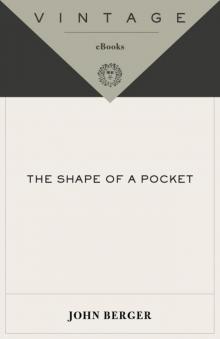 The Shape of a Pocket
The Shape of a Pocket Here Is Where We Meet
Here Is Where We Meet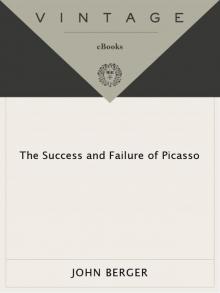 The Success and Failure of Picasso
The Success and Failure of Picasso G.
G.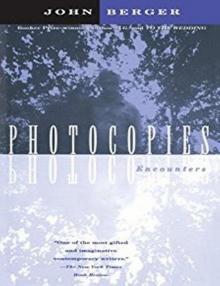 Photocopies: Encounters
Photocopies: Encounters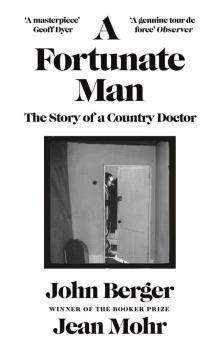 A Fortunate Man: The Story of a Country Doctor
A Fortunate Man: The Story of a Country Doctor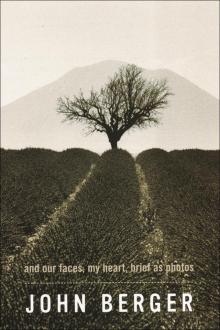 And Our Faces, My Heart, Brief as Photos
And Our Faces, My Heart, Brief as Photos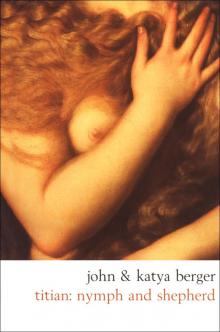 Titian
Titian A Fortunate Man
A Fortunate Man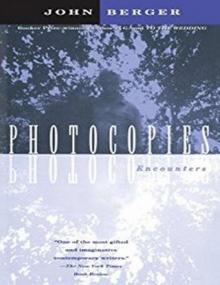 Photocopies: Encounters (Vintage International)
Photocopies: Encounters (Vintage International) Selected Essays of John Berger
Selected Essays of John Berger